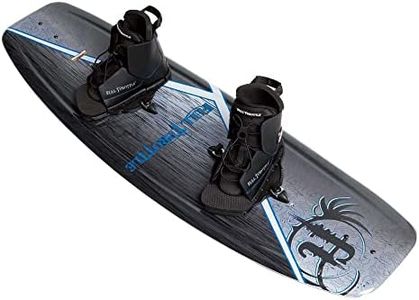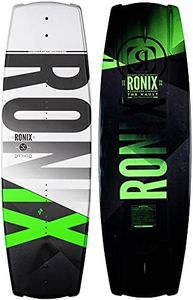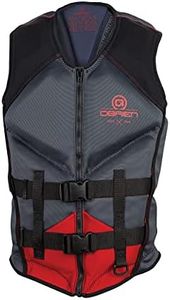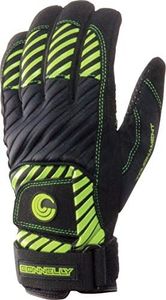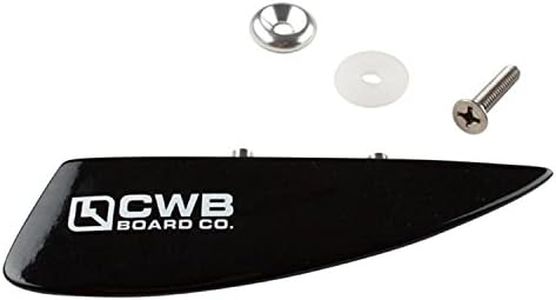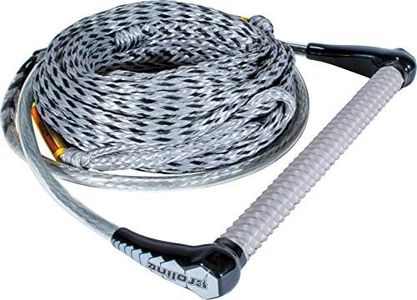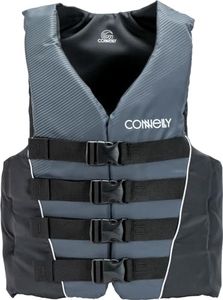We Use CookiesWe use cookies to enhance the security, performance,
functionality and for analytical and promotional activities. By continuing to browse this site you
are agreeing to our privacy policy
10 Best wakeboards
From leading brands and best sellers available on the web.Buying Guide for the Best wakeboards
Choosing the right wakeboard can make a huge difference in your experience on the water, whether you’re just starting out or looking to progress your skills. The perfect wakeboard for you depends on your weight, riding style, and where you’ll be riding. Understanding what different features mean will help you pick a wakeboard that feels stable, fun, and matches your goals. It’s important to balance comfort with performance, so take your time considering these key specifications.Board LengthBoard length is measured in centimeters and it greatly impacts how the wakeboard responds in the water. Shorter boards tend to be lighter and easier to spin, making them good for tricks, but they might not support heavier riders as well and can feel less stable. Longer boards offer more stability, smoother landings, and are easier for beginners to control, but they may feel less maneuverable for advanced moves. To choose the right length for you, match it to your body weight—the manufacturer usually provides a weight range for each board. If you’re in between sizes, consider whether you value stability (go longer) or agility (go shorter).
Rocker TypeRocker refers to the curve of the board from tip to tail, and this plays a huge role in how the wakeboard rides. There are three main types: continuous, three-stage, and hybrid. Continuous rocker is a smooth, consistent curve and provides a faster, smoother ride great for carving and softer landings. Three-stage rocker has a flatter center with more abrupt angles at the ends, creating more pop (height) off the wake but can result in slower speed and harder landings. Hybrid rocker mixes curves for a blend of both styles. Your choice depends on whether you want speed and smoothness (go continuous), big air for tricks (choose three-stage), or a mix (pick hybrid).
WidthThe width of the wakeboard affects how it floats and how easily it comes out of the water. Wider boards have more surface area, which means they are easier to get up on, provide more stability, and tend to perform better at lower speeds. Narrower boards are better for cutting through the water and may offer better edge control for tricks. Beginners usually benefit from a slightly wider board for extra stability, while more advanced riders might prefer a slimmer profile for performance.
Fins and ChannelsFins and channels refer to the features on the underside of the board that help with direction and grip in the water. Larger or deeper fins and pronounced channels provide more tracking, meaning the board is less likely to slip sideways and is great for learning and making controlled turns. Smaller or removable fins make the board looser and better for spins and surface tricks. Think about your comfort level—beginners will find more control with bigger fins, while experienced riders might opt for less grip for more freedom of movement.
FlexFlex describes how much the board bends under weight and impact. A stiffer wakeboard gives more predictable response and high pop for jumps, ideal for riding behind a boat and focusing on big air tricks. Softer, more flexible boards absorb landings better and are great for cable parks and features like rails, giving a more playful feel. Think about where you’ll ride and what style excites you—boat riders and jump seekers usually choose stiffer boards, while cable park fans and those who like smooth landings often prefer more flexible designs.
Weight CapacityEvery wakeboard has a recommended weight range that keeps it performing as designed. Riding a board that matches your weight means you’ll float better, turn more easily, and land tricks safely. If your board’s too small for you, you’ll find it harder to get up or stay stable, while an oversized board can feel sluggish. Always check that your weight is within the board’s recommended limits to get the right balance of performance and safety.
